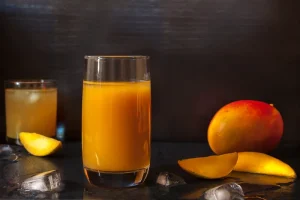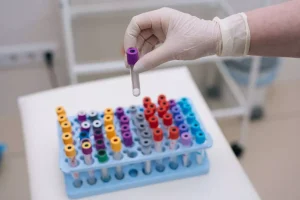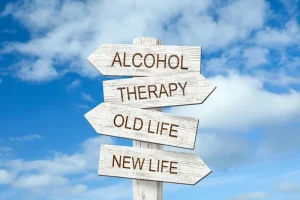
The individual interprets these subtle bodily changes catastrophically (“Maybe I’m having a heart attack!”). Such interpretations create fear and anxiety, which trigger additional physical symptoms; subsequently, the person experiences a panic attack. Standard delivery of RPT also may require a pivotal adaptation when applied to clients with comorbid anxiety disorders. RPT emphasizes the importance of identifying an individual’s unique risk factors (e.g., high-risk situations) for relapse and incorporates skill-development techniques to help reduce the likelihood of lapses and to manage them should they occur. It is widely understood in the RPT literature that negative emotional states are particularly perilous to recovery efforts. A classic analysis of over 300 relapse episodes implicated negative emotional states, conflict with others, and social pressure to use in nearly 75 percent of the relapses studied (Cummings et al. 1980).
- These findings are inconsistent with the idea that each anxiety disorder has a unique association with the risk for alcohol misuse.
- If you or anyone you know is undergoing a severe health crisis, call a doctor or 911 immediately.
- Research in a 2019 article suggests that up to 50% of people having treatment for AUD also meet the criteria for at least one anxiety disorder.
Alcohol misuse in the absence of anxiety

Even if someone starts drinking alcohol as a way to cope with anxiety, it can quickly have the opposite effect. For one, drinking alcohol more frequently or having larger amounts can cause hangovers. For example, https://ecosoberhouse.com/ a person with social anxiety might be afraid of going to a party where there will be many people they do not know. Even simply thinking about attending the gathering might cause them anticipatory anxiety.
What’s the prognosis (outlook) for panic attacks and panic disorder?
To understand exactly why this happens, chemically, it’s important to understand the role of GABA—a neurotransmitter—in the brain and body. Speaking with friends and family can help them prepare to support you when a panic attack strikes. It is also important that your seek support from your GP, who will talk you through available treatment options.

Alcohol and anxiety

These different models are not necessarily irreconcilable when considering the patho-developmental trajectory of addiction. Cross-sectional snapshots of people who have significant alcohol problems might reveal groups with anxiety (Apollonian) and groups without anxiety (Dionysian), but, ultimately, all may become Apollonian types as addiction advances. People who manifest anxiety problems before alcohol problems may transition very rapidly (telescope) from binge/intoxication (Dionysian) to negative affect/withdrawal (Apollonian), whereas others may make this transition more slowly or, perhaps, never. These allostatic adaptations in the brain lead to the second stage of addiction—withdrawal/negative affect. In this stage, reward circuits become blunted because of within-system neuroadaptations. The brain’s stress systems, including corticotropin releasing factor and norepinephrine in the central amygdala and bed nucleus of the stria terminalis, become increasingly dysregulated because of between-system compensatory neuroadaptations.
Opponent process model
At present, SSRIs (e.g., fluoxetine, paroxetine, and sertraline) and SNRIs (e.g., venlafaxine and duloxetine) generally are used as first-line treatment in this area because they consistently demonstrate anxiolytic efficacy, including in patients with comorbid AUDs. For example, a direct examination of the efficacy of paroxetine in this population showed that it reduced social anxiety relative to placebo (Book et al. 2008), providing an empirical foundation for its use in these patients. Moreover, serotonergic agents have favorable properties, such as being well-tolerated and having virtually no abuse potential. Another welcome characteristic of SSRIs in patients with comorbid AUDs is that, in contrast to TCAs, they do not interact with alcohol to increase the risk of respiratory depression (Bakker et al. 2002).

It’s safer to make gradual, small reductions (not sudden large changes).We have advice on how to take a break from alcohol, but if you’re worried you are dependent on alcohol talk to your GP surgery or contact an alcohol support service. In the United States, “moderate” typically refers to two drinks a day for adult men and one alcohol and panic attacks for women. Older adults metabolize alcohol faster, so if you’re in this age group, limit yourself to one alcoholic beverage per day. Research shows that people with alcoholism find it difficult to recover from traumatic events. This is possibly because of the effects of alcohol abuse, which can actually change brain activity.
Can I have a panic attack after drinking?
- Keep in mind that it can take several weeks after first starting a medication to notice an improvement in symptoms.
- If you are experiencing symptoms of a mental health condition such as depression, anxiety, bipolar disorder, PTSD, or similar, a psychiatrist may be a good place to start.
- This is characterized as the impulsive stage of addiction because the goal of increasing pleasure, rather than avoiding or escaping discomfort, motivates seeking alcohol or other drugs.
- Panic attacks are episodes of extreme anxiety that typically last between 5 and 20 minutes.
- Even simply thinking about attending the gathering might cause them anticipatory anxiety.